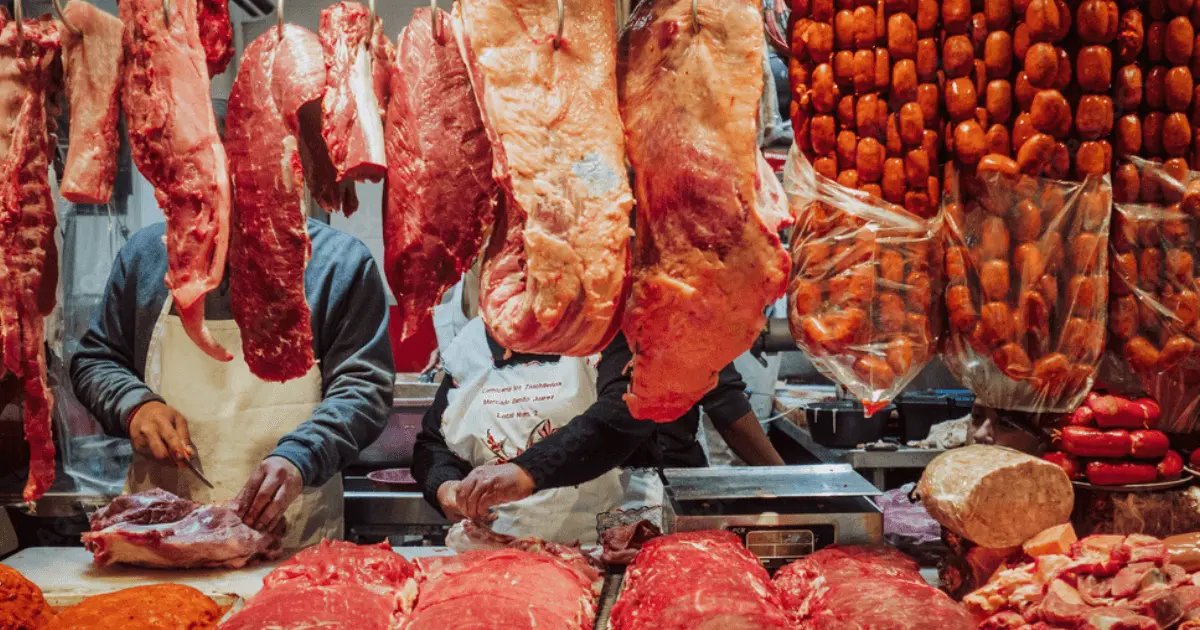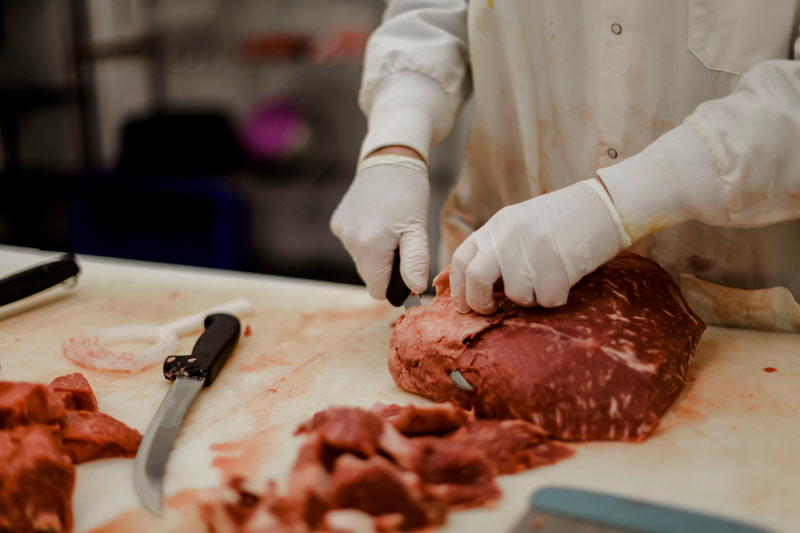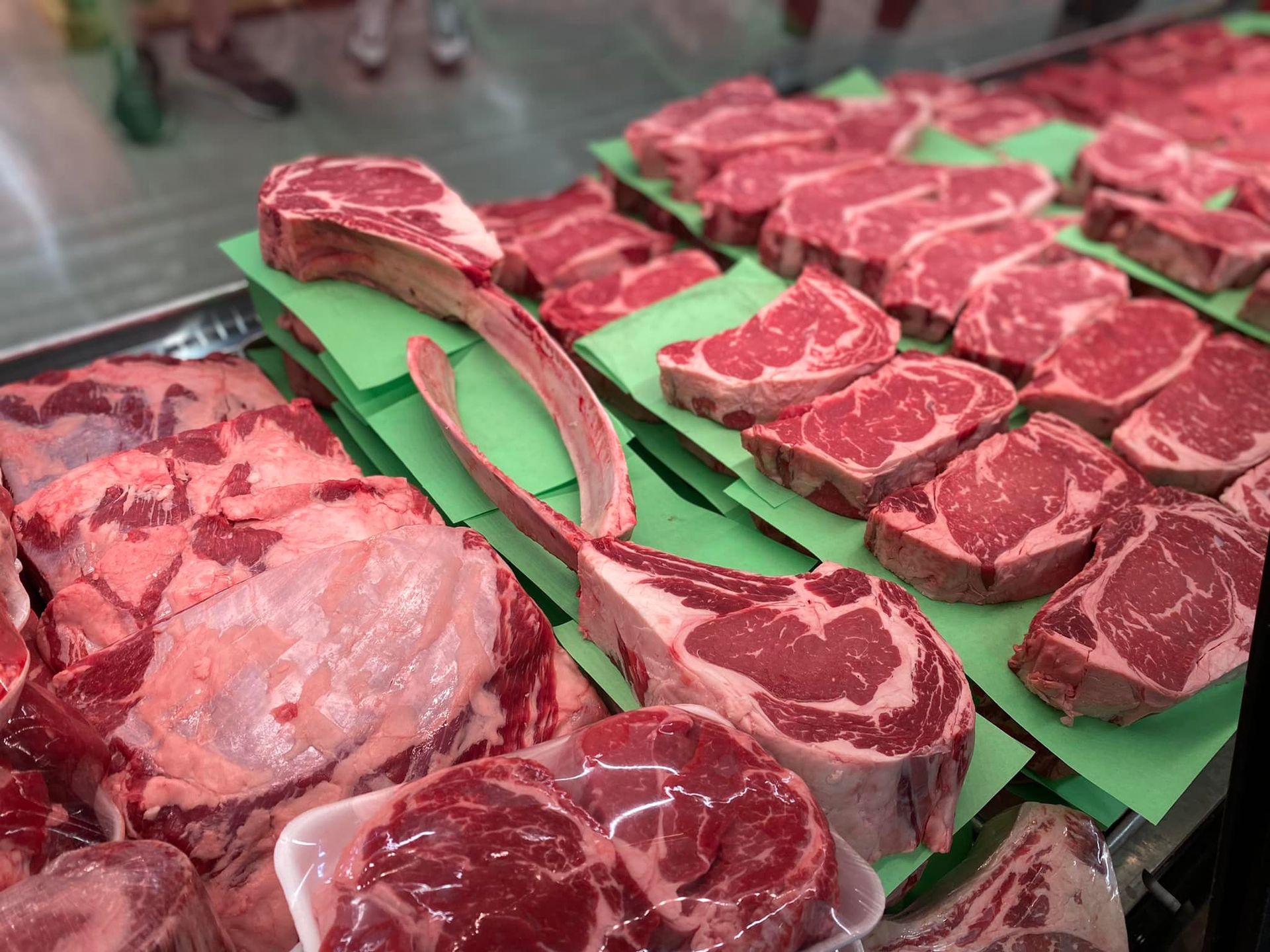Top Factors to Shop at Bagley Farms Meat Market Edwardsville IL for Costs Meats
Top Factors to Shop at Bagley Farms Meat Market Edwardsville IL for Costs Meats
Blog Article
Uncover the Art of the Butcher's Cut in a Modern Meat Market
In the ever-evolving landscape of modern meat markets, the butcher's cut has transcended its typical roots, combining age-old workmanship with contemporary methods. bagley farms meat market edwardsville il. Today's butchers are not just processors of meat; they are educated artisans who stress sustainability and moral sourcing. Their know-how in selecting and preparing cuts customized to details culinary demands provides an exceptional dining experience. Yet, what really sets the contemporary butcher apart is their ability to build a deeper connection in between customers and the origins of their meat. How do these masters balance practice with advancement, and what ramifications does this have for the future of meat consumption?
Development of Butchery Strategies

The mid-20th century saw butchery techniques further improved by scientific understandings into muscular tissue biology and meat aging, enhancing both tenderness and taste. Developments like vacuum cleaner packaging and refrigeration prolonged item shelf-life, permitting butchers to branch out offerings and enhance quality assurance. This duration also noted the rise of specific tools, such as band saws and meat slicers, which raised precision and efficiency in meat handling.
The 21st century has actually presented digital modern technology right into the butchery realm. Electronic systems now assist in monitoring pet provenance and maximizing cuts to fulfill certain client preferences. Additionally, a resurgence in artisanal butchery has actually emerged, mixing conventional abilities with contemporary knowledge to satisfy customers seeking moral and sustainable meat options. This advancement highlights a vibrant interaction between tradition and advancement, meeting contemporary needs while maintaining the craft's heritage.

Comprehending Meat Cuts

Comprehending the intricacies of meat cuts is crucial for both butchers and consumers looking for top quality and value. For butchers, precise cuts mirror skill and regard for the craft, making sure very little waste and optimal yield.
The key categories of meat cuts consist of primal, sub-primal, and retail cuts. Butchers after that damage these down further into sub-primal cuts, before lastly creating retail cuts readily available to customers, like ribeye or tenderloin.
Recognizing muscular tissue composition is critical; muscle mass used more regularly by the pet tend to be harder and are best suited for slow-moving cooking approaches, while less-used muscle mass, like those located in the loin, are much more tender and suitable for grilling or roasting. Familiarity with these differences empowers consumers to make informed choices, boosting their culinary undertakings.
Choosing High Quality Meat
Selecting the best meat involves even more than just selecting a visually appealing item from the display. The art of picking high quality meat calls for a discerning eye and understanding of certain attributes that indicate view website quality and excellence. Firstly, focus on the color; beef must have a bright, cherry-red color, while lamb must exhibit a soft pink tone, and pork a light pink. This suggests the meat is fresh and hasn't been exposed to oxygen for too long.
Second of all, consider the marbling, which describes the white streaks of fat within the muscle. Appropriate marbling is a vital indication of inflammation and taste, as it melts during cooking, enhancing the meat's juiciness. Remember, higher marbling often associates with superior quality cuts, such as USDA Prime.
Structure is another vital element; meat must really feel firm to the touch, not slimed or excessively soft. Furthermore, bear in mind the scent. Fresh meat must have a tidy, neutral odor, devoid of any kind of sour or off-putting odors.
Matching Cuts With Cooking Approaches
Effectively coupling cuts of meat with the appropriate cooking approaches is essential for accomplishing optimum taste and texture. Various cuts differ in tenderness, marbling, and connective tissue content, each needing certain techniques to unlock their capacity. Tender cuts like filet mignon and ribeye, with their fundamental marbling, advantage from high-heat, quick-cooking methods such as cooking or pan-searing. These approaches enhance the meat's all-natural flavors and make certain a juicy surface.
On the other hand, harder cuts like brisket and chuck roast are abundant in collagen, which damages down right into jelly when prepared gradually. These cuts are perfect for braising or slow-moving roasting, enabling the meat to soften over time and create deep, intricate tastes. Cuts such as brief ribs and pork shoulder get on well with slow-cooking approaches, where extended cooking times transform their durable structures right into succulent recipes.
Lamb shanks and oxtail, which need long term cooking to soften, are perfect candidates for stewing or slow-moving simmering. These methods coax out abundant, hearty tastes while maintaining dampness. By comprehending the special attributes of each cut, cooks and home cooks alike can elevate their cooking creations, making certain each meal is both satisfying and remarkable.
The Butcher's Role Today
Browsing the progressing landscape of the contemporary meat market, the butcher's role today prolongs past simple prep work of cuts. Contemporary butchers are culinary artisans, teachers, and supporters for sustainable methods. They connect the space between why not try these out the ranch and the fork by ensuring honest sourcing, comprehending pet husbandry, and focusing on openness in the supply chain. This change shows the expanding consumer need for quality over quantity, where provenance and pet welfare are paramount.
Along with crafting accurate cuts, butchers now engage directly with customers, using cooking suggestions and customizing selections to suit specific needs and preferences. Their expertise in meat aging, marbling, and flavor profiles equips customers to make informed decisions, improving their cooking experiences. This personalized service exemplifies the butcher's advancing over here role as a relied on expert in the kitchen.
In addition, butchers are critical in lessening waste, utilizing entire animals to develop diverse products such as sausages and supplies - bagley farms meat market edwardsville il. This extensive strategy not only respects the pet but also lines up with contemporary sustainability goals. In this method, the modern butcher embodies both custom and development, adjusting to an ever-changing market while preserving the virtuosity and honesty of their craft

Verdict
The contemporary butcher's craft delicately weaves conventional methods with contemporary innovations, emphasizing lasting methods and ethical sourcing. Mastery in understanding diverse meat cuts and top quality signs equips butchers to give informed recommendations, aligning specific cuts with optimal cooking techniques. This knowledge not just raises cooking experiences but additionally strengthens the connection in between customers and the origins of their food. By honoring historical methods while embracing contemporary needs, the butcher's role continues to be important in today's advanced meat market.
Report this page